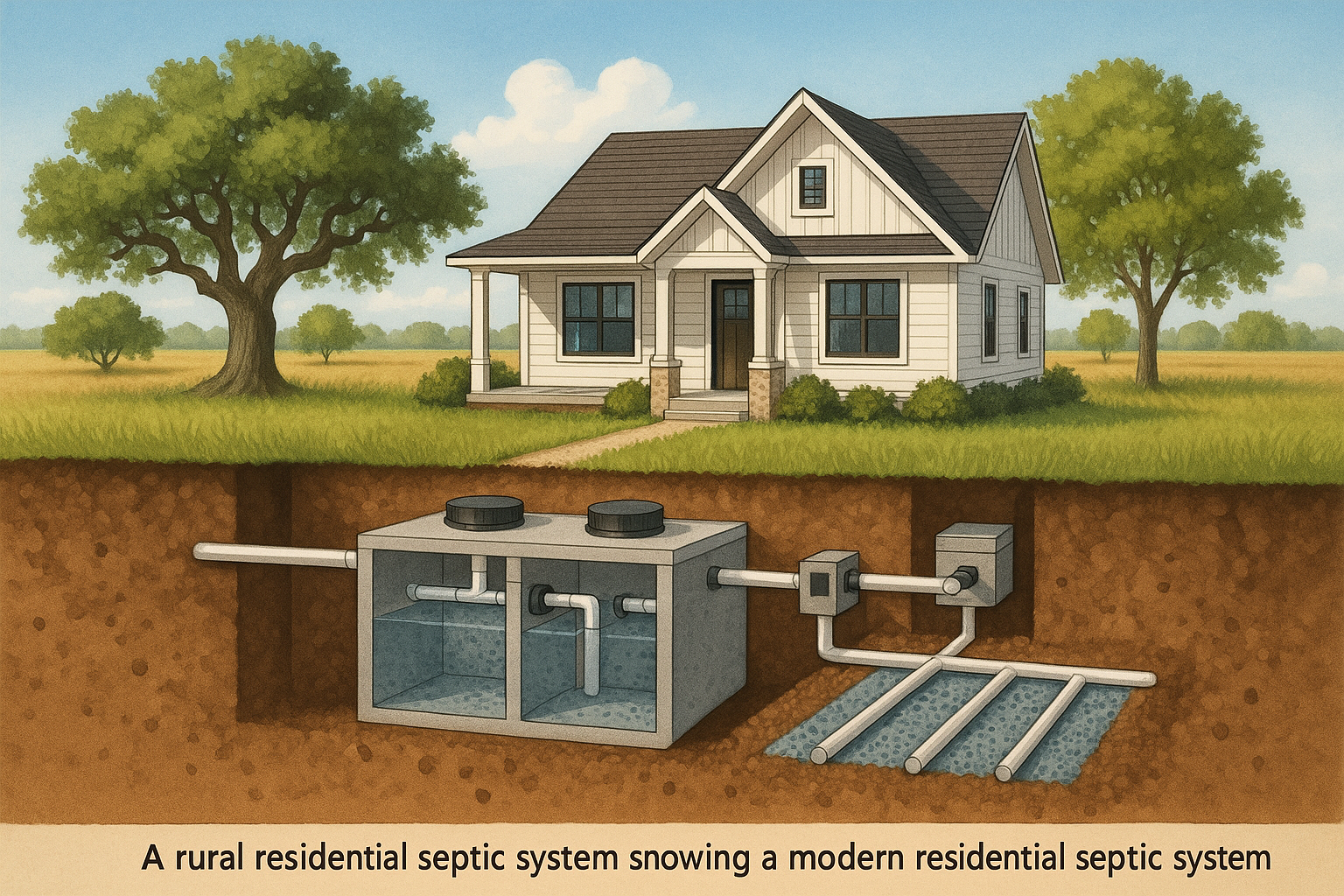Planning and Maintaining Septic Systems for Rural Texas Custom Homes


Practical guide to Texas septic system regulations and planning for rural custom homes.
Texas Regulations and Approval Process for On-Site Wastewater Systems
Building on your own land in Texas often means building outside city limits—and that means providing your own utilities. Septic systems are the most common solution for wastewater disposal in rural and many suburban custom homes, yet many buyers are unfamiliar with the local laws, approval process, or ongoing care required. Ignoring the details can derail a project, delay move-in, and add thousands to unexpected costs, so learning the basics early is essential. State and county rules govern the placement, design, installation, and inspection of all on-site sewage facilities (OSSFs). A soil test and property map are usually needed to develop a compliant system plan, and fees, septic sizing formulas, and setbacks vary by location. Builders, designers, and buyers should work together from the start to identify cost and permitting requirements—well before you break ground. For a technical overview, use the official state resource: Texas OSSF Design Guide.
Choosing the Right System: Site, Soil, and Wastewater Options
Once you’ve chosen Texas Hill Country acreage or a rural lot for your custom home, planning for utilities—especially wastewater disposal—becomes top priority. Most properties outside city limits lack municipal sewer service, so a carefully designed septic system is both a practical and legal necessity. The right system depends on your soil type, property slopes, number of bedrooms, and local groundwater depth; a soil test and site plan are required before design approval. Options range from conventional gravity systems (ideal for sandy, well-drained soils) to aerobic treatment units that handle heavy clay or small lots. See Texas regulatory basics at Texas On-Site Sewage Facilities (Septic) Rules. Professional installation isn’t optional: Texas law requires licensed installers for site evaluation and all major work, with final permits signed off by county health departments. Builders and buyers should review the county’s process before starting construction, as unauthorized or incorrectly placed systems can result in costly rework or fines. A septic designer will consider setback requirements, flood zones, and distances from water wells, creeks, or buildings. Conventional systems use a series of underground tanks and leach fields, while others (like drip irrigation or spray) can reclaim treated water for landscape use—a popular upgrade in dry regions. For a practical primer on types and layout, visit: Types of Septic Systems.
Maintenance, Costs, and Red Flags: What Homeowners Must Know
Proper septic maintenance protects both your home and neighborhood—and is often required annually to stay in compliance. Expect to pump tanks every 3-5 years, with aerobic or advanced systems requiring more regular service and documentation for county records. Homeowners should keep a maintenance log and save inspection reports, as these are sometimes requested in real estate transactions. Costs vary by lot, system type, and local rules, but Texas homeowners regularly spend $10,000–15,000 (or more) on installation for average-sized homes. Cutting corners can drive up long-term expenses; repairs to saturated or failing fields, or fines from accidental leaks, far outweigh the savings. Warning signs to watch for include slow drains, foul odors, or unusually lush patches of grass above your drain field. Be proactive about protecting the system—never park vehicles on septic fields, avoid flushing grease or chemicals, and notify service companies of any problems early. More tips on rural Texas septic care can be found here: Texas Septic System Maintenance 101.
.png?width=400&height=133&name=TRUE%20STONE%20LOGO%20(1).png)